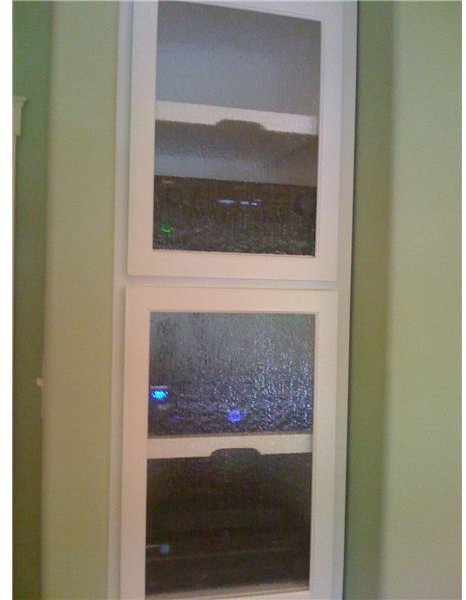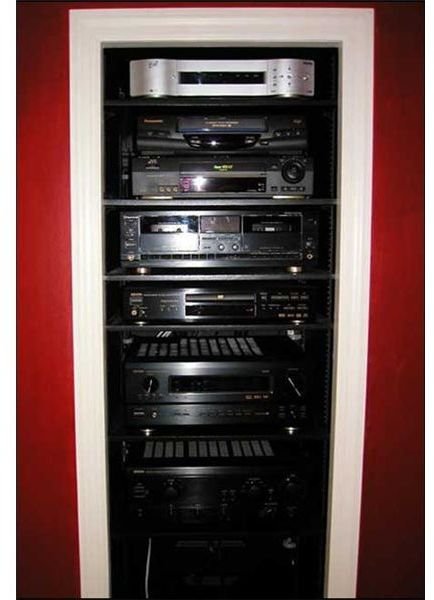Tips & Ideas on How to Build a Media Closet - Building a Home Theater Room
What Are Media Closets?
Media closets are spaces where you can store your home theater equipment, including your A/V equipment, DVR, DVD player, etc. Media closets are generally built into a wall or existing closet space. These closets allow you to have as much equipment as you want without having to worry about placement. Plus, they help keep equipment out of sight. These closets, however, are not features in most homes. So, here are some tips on how to build a media closet.
Media Closet Doors
If you are planning on building a media closet, you need to consider your home theater equipment. If your home theater remote needs
direct line of sight to the equipment, then you need something that can be opened and closed. Or, you need to leave the door off completely. If you do not have a closet that can be converted into a media closet, you could also consider using a nook area.
Media Closet Ventilation
When building a media closet, you need to reflect on a few things. The more equipment that is kept in a room, the hotter that area will get. If your media closet is going to be in a completely closed space, it would be wise to install a fan. If not, your equipment could overheat.
Look into fans specifically built for cooling down home theater equipment. For example, the PQfan is designed to turn itself on when you are using your home theater equipment. Whatever type of fan that you get, it needs to provide adequate air flow in your closet. You should figure that for every 100 watts of home theater equipment in your closet, you need at least 9 cubic feet per minute (CFM) of air flow.
Building Your Media Closet
Pre-measure your closet area before you begin cutting your boards so that you can be sure that your cuts are correct. Once the boards are cut, sand them down so that paint and stain will better adhere to the surface. Always stain or paint your boards before installing them. Do this outside or in a well ventilated area to avoid become overpowered by the fumes.

Once your boards are installed, wipe up extra glue with a warm, damp cloth so that it doesn’t clot on the walls or boards. Cover nail holes with wood putty, and paint over them once the putty is dry. Cut your closet door so that there is a bit of a gap at the bottom. This will allow air to freely flow around your home theater equipment. Doors should be made either of wood or glass to avoid noise pollution in the house.
Painting Your Media Closet
Paint your media closet so that it matches your décor. Use complementary or contrasting colors so that it doesn’t clash with your interior walls. If most of your equipment is black, paint the closet black so that the home theater equipment will be even less noticeable.
Home Theater Cables Access
You need to be able to access your home theater cables in your media closet. If the back wall of your media closet is flesh against the wall of another room, cut out a door on the other side. Or, build shelves that can be rolled out.
